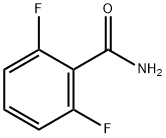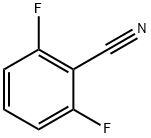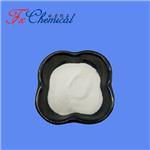Description
2,6-Difluorobenzamide is a major metabolite of pesticide diflubenzuron and has been quantitated by HPLC/diode-array method.
Description
2,6-Difluorobenzamide is a white powdery crystal, insoluble in water. It can be obtained by hydrolysis of 2,6-difluorobenzonitrile. 2,6-Difluorobenzamide is an important intermediate in the synthesis process of benzoylurea insecticides, which is used to synthesize the next intermediate 2,6-difluorobenzoyl isocyanate, and finally obtain flubolurea, pyruron, fluridin, lice mite urea and other pesticide varieties. It can also be directly used to synthesize pyruron and flubolea. 2,6-Difluorobenzamide can inhibit the bacterial cell division protein FtsZ[1].
Chemical Properties
white to yellowish powder
Uses
2,6-Difluorobenzamide (CAS# 18063-03-1) is a useful building block used in the synthesis of (E)-3-methyleneisoindolin-1-ones via oxidative annulation acrylates. It is also used in the synthesis of pesticide intermediates, which can be used to produce various insecticides such as fluazuron, chlorpyrifos, and pyrethroids.
Preparation
2,6-Difluorobenzamide is obtained by hydrolysis of 2,6-difluorobenzonitrile.
Toxics Screening Level
The Initial Threshold Screening Level (ITSL) for 2,6-Difluorobenzamide is 11 μg/m3 based on an annual averaging time.
References
[1] Straniero V, et al. 2,6-Difluorobenzamide inhibitors of the bacterial cell division protein FtsZ: design, synthesis and
Structure Activity Relationship study. ChemMedChem, 2017; 12: 1303-1318.





